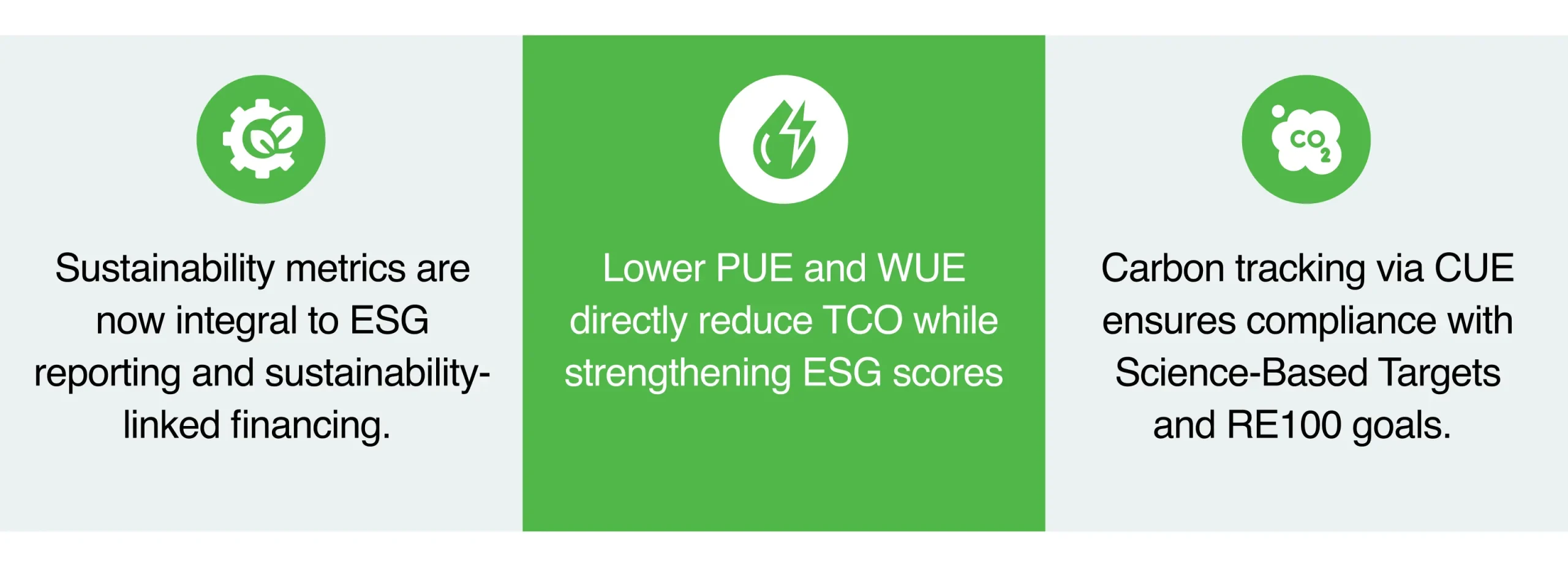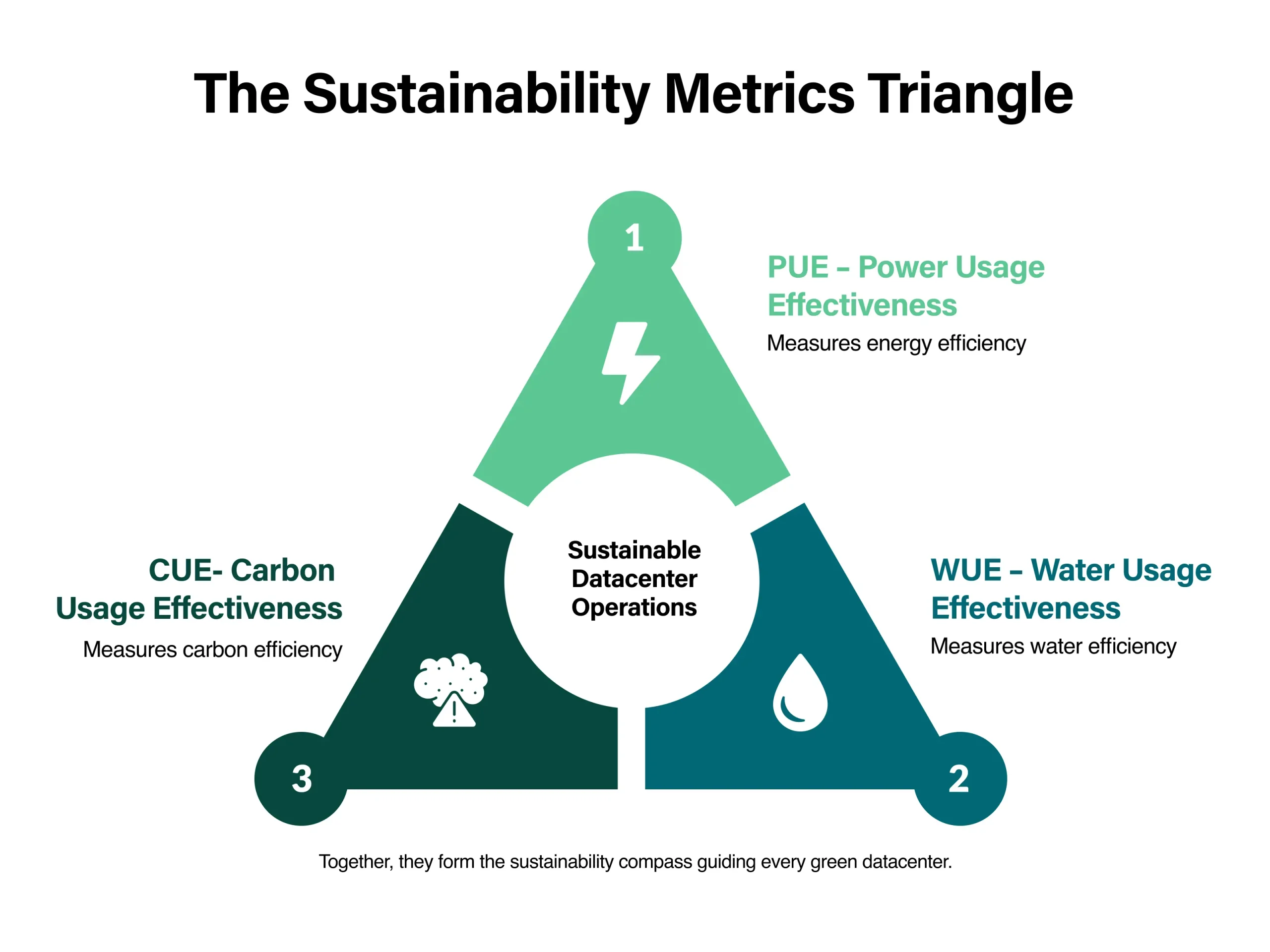The digital economy is expanding at breakneck speed. From cloud computing and streaming platforms to artificial intelligence and IoT, nearly every aspect of modern life depends on data centers.
The progress is impressive, however, it comes with a heavy environmental price tag.
According to a McKinsey report, global demand for data center capacity is projected to grow at an annual rate of 19–22%, reaching 171 to 219 gigawatts by 2030. Nearly 70% of this demand is expected to come from AI-ready data centers.
Beyond electricity, the industry is also under scrutiny for its massive water consumption. A recent study shows, In 2023, U.S. datacenters are estimated to have consumed 17 billion gallons of water directly for cooling and over 200 billion gallons indirectly through electricity production.
Moreover, the rising carbon emissions from digital infrastructure add another layer of urgency to the sustainability challenge.
These stats paint a clear picture – Datacenters expansions are directly proportional to their environmental costs. To balance growth with responsibility, operators need practical tools to understand and reduce their footprint.
That’s where three critical sustainability metrics: Power Usage Effectiveness (PUE), Water Usage Effectiveness (WUE), and Carbon Usage Effectiveness (CUE) come into play. These metrics give operators a framework to benchmark efficiency and help in aligning operations with global sustainability goals.
In this blog post, we shall dive into these three metrics and discuss what green datacenters should prioritize in their journey toward a sustainable digital future.
Read on to know more.
Why Measuring Key Metrics
Sustainability metrics are essential for modern datacenters to balance growth with environmental responsibility. They ensure accountability and highlight areas for improvement.
In fact, industry experts emphasize that tracking key sustainability metrics is no longer optional but essential for responsible growth.
Benefits of tracking key metrics.
- Identify inefficiencies in cooling, power, and carbon management.
- Ensure compliance with environmental regulations and ESG frameworks.
- Provide transparency to investors, regulators, and enterprise customers.
- Enable smarter resource planning and cost optimization.
- Create a measurable roadmap toward net-zero operations.
Why Hyperscalers Should Care
For hyperscalers, these metrics are more than technical benchmarks – they’re business enablers.

By 2030, sustainability metrics will form part of every hyperscaler’s operational dashboard – influencing site selection, investment approvals, and client trust.
PUE, WUE and CUE: Three key metrics for green data centers
PUE: Power Usage Effectiveness
Power Usage Effectiveness (PUE) is the most widely recognized metric for datacenter efficiency. Introduced by The Green Grid, it benchmarks how effectively a facility uses energy. At present, the global average PUE for data centers is around 1.56.
PUE compares the total energy consumed by the entire facility to the energy actually used by IT equipment such as servers and storage.
Formula
PUE=Total Facility energy (power) ÷ total IT Equipment Energy
A PUE of 1.0 means perfect efficiency, where all energy goes directly to IT equipment, with no extra energy used for cooling, lighting, or power distribution. However, reaching 1.0 is nearly impossible in practice. Still, top operators have come close. For example, Google reported a fleet-wide average of 1.09 in 2024, and Meta’s top sites show similar performance. CtrlS too has been able to maintain PUE at 1.35 for our datacenters.
Why it matters?
PUE is a key metric for any green datacenter strategy. It gives datacenters a clear view of their energy use beyond servers. By tracking this metric, managers spot inefficiencies, compare site performance, and adjust operations in real time. With this knowledge, operators can design smarter strategies for sustainable growth.
WUE: Water Usage Effectiveness
Water Usage Effectiveness (WUE) is a key metric that measures how efficiently a data center uses water relative to its IT energy consumption. It quantifies the efficiency of water utilization in relation to computing power. It is calculated by dividing the total annual data center water consumption (liters) by the energy consumed by IT equipment (kWh).
Formula
WUE = Data Center Water Consumption (liters) ÷ IT Equipment Energy Consumption (kWh)
The industry average WUE is around 1.8 L/kWh, but highly optimized facilities such as Meta’s datacenters have reported values as low as 0.24 L/kWh. This means Meta’s datacenters are over 80% more water efficient than the average datacenter.
Why it matters?
Monitoring WUE enables operators to spot inefficiencies, improve cooling strategies, and lower water consumption. This proactive management conserves precious water, ensures compliance, and reinforces the data center’s reputation for sustainable operations.
Impact at Hyperscale:
Lower WUE directly reduces operational costs and supports sustainability in regions where hyperscale growth meets environmental sensitivity.
CUE: Carbon Usage Effectiveness
Carbon Usage Effectiveness (CUE) is a key metric that measures how efficiently a data center manages carbon emissions relative to its IT energy consumption. It provides a clear link between energy usage and environmental impact. It is calculated by dividing the total CO₂ emissions (kg) from the data center by the energy consumed by IT equipment (kWh).
Formula
CUE = Total CO₂ Emissions (kg) ÷ IT Equipment Energy Consumption (kWh)
The global average CUE varies depending on energy sources, but data centers using renewable energy and efficient systems can achieve significantly lower values. For example, leading companies that prioritize low-carbon energy and optimized operations have reduced CUE, cutting emissions per kWh far below conventional facilities.
Why it matters?
Monitoring CUE helps operators understand how much of the data center’s total CO₂ emissions come from IT energy use. With these insights, they can adopt renewable energy, improve efficiency, and reduce environmental impact. Tracking CUE also supports compliance with carbon regulations and reinforces the data center’s commitment to sustainable operations.
Impact at Hyperscale:
Reducing CUE improves ESG scores, helps qualify for green financing, and ensures compliance with global carbon disclosure frameworks.
PUE Vs WUE Vs CUE: which one is best for green datacenters?
PUE, WUE, and CUE form the core triad for measuring data center sustainability and each one highlights a distinct aspect of operational efficiency. PUE focuses on energy efficiency, WUE measures water usage, and CUE captures carbon emissions, making it clear that no single metric can reflect the facility’s overall environmental impact. Since changes in one metric can affect the others, balancing trade-offs is also essential.

Industry experts suggest that considering all three together provides a holistic view. However, priorities depend on various factors such as energy sources, water availability, and regulations. A balanced approach, which uncovers inefficiencies and highlights cost-saving opportunities, is the best way forward as it promotes sustainability while maintaining operational performance.
Conclusion
PUE, WUE, and CUE are more than environmental indicators – they are the foundation of responsible growth in the AI-driven digital economy.
Monitoring all three helps hyperscalers improve efficiency, meet ESG goals, and reduce environmental impact while ensuring resilience and scalability.
At CtrlS, sustainability is built into every design decision.
We track and optimize PUE, WUE, and CUE across our Rated-4 campuses – powered by renewable energy, equipped with closed-loop cooling, and designed for long-term efficiency.
Through initiatives like GreenVolt 1, we are redefining what sustainable hyperscale infrastructure looks like in India.
Learn more: Explore CtrlS Sustainability Initiatives

Sankarraman Subbaraman, Vice President - Pre Sales, CtrlS Datacenters
With over two decades of rich industry experience, Sankar is responsible for developing and executing comprehensive techno-commercial strategies to maximize business growth. His role encompasses a deep-dive competitor analysis, new client acquisition, and the cultivation of strategic partnerships within the partner ecosystem. He is instrumental in delivering tailored datacenter solutions that exceed client and stakeholder expectations.

